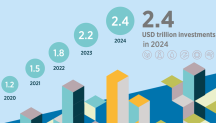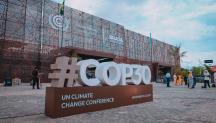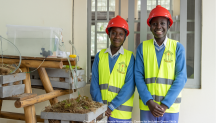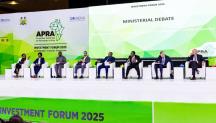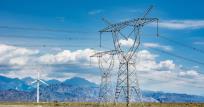
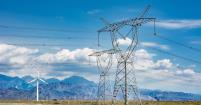
IRENA and China State Grid Pave Way Towards Smart Electrification
Newsletter
“Future power grids will be very different from the current ones and will require smart electrification solutions as renewable energy is growing faster than ever,” said IRENA Director-General Francesco La Camera, at a joint workshop by IRENA and the State Grid Corporation of China (SGCC), the world’s largest grid operator and corporation. The virtual workshop “Facilitating the transition toward smart electrification with Renewables in China” also marked the launch of a joint report with SGCC titled Smart Electrification with Renewables: Driving the transformation of energy services.
With the objective to discuss the implications of accelerated renewables deployment on China’s power system and to introduce the contents of the Smart Electrification report, the workshop gathered speakers and energy experts from IRENA, SGCC and State Grid Energy Research Institute (SGERI).
At a high-level discussion with SGCC Executive Chairman, Xin Baoan, La Camera commended China for its role in the transition to sustainable energy and shared the success story of the MoU between IRENA and SGCC which was signed in April 2021 to conduct joint activities for facilitating grid development in China and in IRENA’s Clean Energy Corridor regions. “China is already a global leader in renewables, accounting for one third of globally installed renewables capacity. We strongly cherish our cooperation with SGCC. Our work provides many lessons for countries wishing to accelerate the use of renewable electricity,” he added.
In discussion w/ @SGCCofficial Executive Chairman, Xin Baoan, DG @flacamera says: "#China State Grid is a strong partner of #IRENA. Other countries will look to #China as good example to accelerate #renewable electricity & transform power grids to a low-carbon future." pic.twitter.com/xzrrPMN7gk
— IRENA (@IRENA) February 17, 2022
Speaking on China’s plans to modernise its power grids, Baoan said, “We plan to invest USD 350 billion between 2021 and 2025 to upgrade our power grid and build new power systems with improved voltage regulation capability and better compatibility with renewables energy. The joint report is a valuable tool for achieving this. In the future, we look forward to sending our experts to carry out further research with IRENA.”
Presenting the key highlights from the Smart Electrification report, IRENA’s Asami Miketa noted that in the long term, there is a need to shift from the concept of integrating renewable energy in the existing system to designing new power systems for better using renewables. The report presents recent trends in relevant technologies and innovations, sets out possible long-term pathways for electrification with renewables, and identifies priority actions to enable those pathways. It also provides a host of potential solutions, insights and perspectives to facilitate the transition towards a future power system with a vast expansion of renewables, a smarter and much more flexible electricity grid, and huge increases in the numbers of vehicles and other products and processes that run on electricity.
#ICYMI: #IRENA & @SGCCofficial new joint report provides policy makers w/ an overview of the global transition to electrification w/ #renewables, by addressing key strategic issues in the pathways towards smarter & much more flexible #electricity #Grid👇https://t.co/wNp71yEJfg
— IRENA (@IRENA) February 19, 2022
In another session moderated by Jiang Liping, Vice President, SGERI, energy experts and academics agreed that research on smart electrification with renewables is not only valuable to China but critical to the global energy transition. Kaare Sandholt, chief international expert, Energy Research Institute, said a lot of crucial learning has come out from the report. “The research has to be ongoing as large-scale development of renewable energy will continue and with it the challenges to integrate a high proportion of renewables into grids and energy systems.”
Kristian Ruby, secretary general, Eurelectric, said smart electrification is a giant opportunity for China as it already has a strong value chain in wind and solar energy. “These efforts can create enormous opportunities for jobs and sustainability in the country,” Ruby said.
In a session moderated by @SGCC’s Jiang Liping around findings of #IRENA-@SGCC joint report, experts were in agreement that research on smart electrification w/ #renewables is not only valuable to #China but critical to the global #EnergyTransition.
— IRENA (@IRENA) February 17, 2022
Read: https://t.co/c4GzR8I6C3 pic.twitter.com/sPAHkaxpoO
In his closing remarks, Dolf Gielen, IRENA’s Director for Innovation and Technology said that the plan is to expand the research cooperation with SGCC in the coming two years to address the key challenges that China and in fact the whole world is facing in the energy transformation process. "As we go together, we will continue to fine-tune this cooperation agenda,'' Gielen said.
